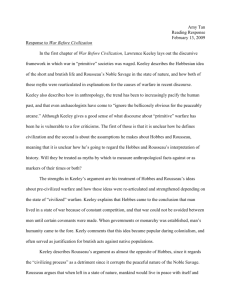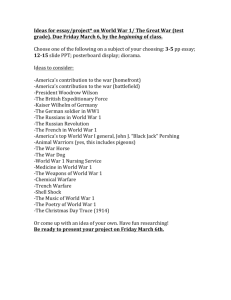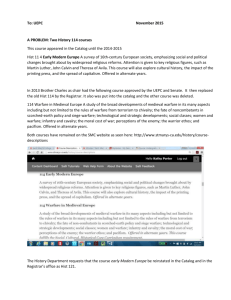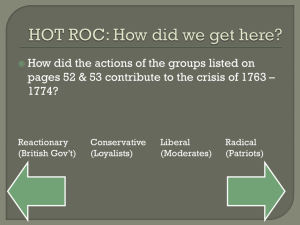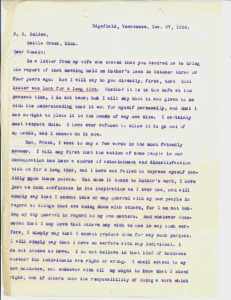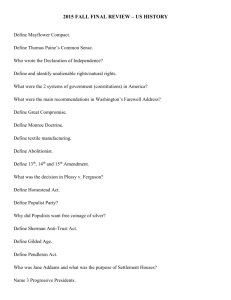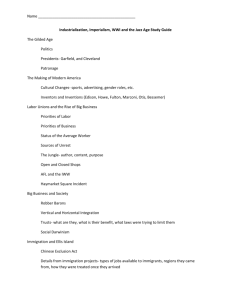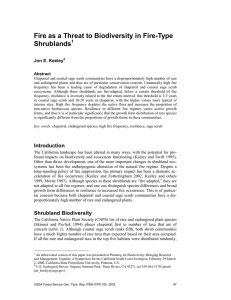Violence response 2
advertisement
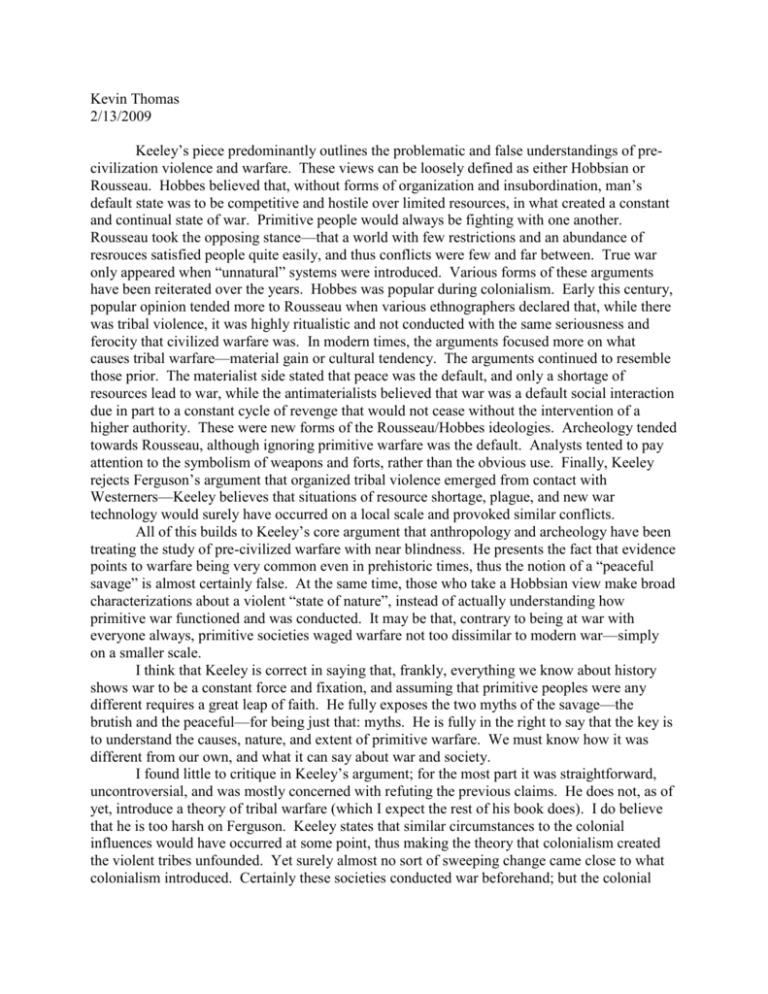
Kevin Thomas 2/13/2009 Keeley’s piece predominantly outlines the problematic and false understandings of precivilization violence and warfare. These views can be loosely defined as either Hobbsian or Rousseau. Hobbes believed that, without forms of organization and insubordination, man’s default state was to be competitive and hostile over limited resources, in what created a constant and continual state of war. Primitive people would always be fighting with one another. Rousseau took the opposing stance—that a world with few restrictions and an abundance of resrouces satisfied people quite easily, and thus conflicts were few and far between. True war only appeared when “unnatural” systems were introduced. Various forms of these arguments have been reiterated over the years. Hobbes was popular during colonialism. Early this century, popular opinion tended more to Rousseau when various ethnographers declared that, while there was tribal violence, it was highly ritualistic and not conducted with the same seriousness and ferocity that civilized warfare was. In modern times, the arguments focused more on what causes tribal warfare—material gain or cultural tendency. The arguments continued to resemble those prior. The materialist side stated that peace was the default, and only a shortage of resources lead to war, while the antimaterialists believed that war was a default social interaction due in part to a constant cycle of revenge that would not cease without the intervention of a higher authority. These were new forms of the Rousseau/Hobbes ideologies. Archeology tended towards Rousseau, although ignoring primitive warfare was the default. Analysts tented to pay attention to the symbolism of weapons and forts, rather than the obvious use. Finally, Keeley rejects Ferguson’s argument that organized tribal violence emerged from contact with Westerners—Keeley believes that situations of resource shortage, plague, and new war technology would surely have occurred on a local scale and provoked similar conflicts. All of this builds to Keeley’s core argument that anthropology and archeology have been treating the study of pre-civilized warfare with near blindness. He presents the fact that evidence points to warfare being very common even in prehistoric times, thus the notion of a “peaceful savage” is almost certainly false. At the same time, those who take a Hobbsian view make broad characterizations about a violent “state of nature”, instead of actually understanding how primitive war functioned and was conducted. It may be that, contrary to being at war with everyone always, primitive societies waged warfare not too dissimilar to modern war—simply on a smaller scale. I think that Keeley is correct in saying that, frankly, everything we know about history shows war to be a constant force and fixation, and assuming that primitive peoples were any different requires a great leap of faith. He fully exposes the two myths of the savage—the brutish and the peaceful—for being just that: myths. He is fully in the right to say that the key is to understand the causes, nature, and extent of primitive warfare. We must know how it was different from our own, and what it can say about war and society. I found little to critique in Keeley’s argument; for the most part it was straightforward, uncontroversial, and was mostly concerned with refuting the previous claims. He does not, as of yet, introduce a theory of tribal warfare (which I expect the rest of his book does). I do believe that he is too harsh on Ferguson. Keeley states that similar circumstances to the colonial influences would have occurred at some point, thus making the theory that colonialism created the violent tribes unfounded. Yet surely almost no sort of sweeping change came close to what colonialism introduced. Certainly these societies conducted war beforehand; but the colonial powers both harnessed and provoked the war power of the tribes to great effect. Ferguson is wise to point out that these exceptional circumstances and tribal zones would have encouraged war and violence on a grander scale than what the tribes typically conducted.
